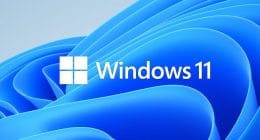Like all industries and sectors, medical care is continually evolving by updating services and introducing the latest smart technologies to provide patients with state-of-the-art treatment and the best possible care. The digital world can undoubtedly enhance this and make telehealth a significant player by fully incorporating it on multiple platforms like mobile, computer and market it quickly with strong networking links.
For this to happen, there needs to be strong regulatory enforcement that will oversee the continued improvement of privacy and security across all telehealth services. Whether this involves booking routine check-ups in Arkansas or applying for a medical marijuana card application in Missouri, telehealth users deserve that level of confidentiality from what has the potential to be a groundbreaking service.
We have highlighted the five areas below as potential security lessons you can learn from running a telehealth platform;
- PROTECTION VIA HIPAA
- It states in HIPAA privacy rules that identifiable health information to be used and disclosed is limited. Their respective security rules suggest that safeguarding physical, technical, and administrative should protect electronic identifiable health data. Therefore, should providers be legally obliged to adopt management of identity protocols and access controls?
- RISK OF SECURITY
- There is a potential risk that data stored on supporting devices are susceptible to unauthorized access, and the patient could inadvertently receive hardware or software detailed data. This is largely derived from general telehealth systems where the provider and patient communicate, and multiple risks apply during the transmission, including sensitive data collection and breach of confidentiality.
- RISK OF PRIVACY
- The disclosure, use, and collection of personal information limits are most at risk from a perceived absence of control from patient sensors at home that contain extremely sensitive data.
- CONTROLLING SECURITY
- A person’s name or role within a company can trigger a security system and allow unprecedented access to a lot of information. Controlling data access in this way is pivotal and needs to be tightened considerably by further protection via state-of-the-art validation and access technology.
- CONTROLLING PRIVACY
- There is a huge gap in terms of any substantial control of information being leaked out because of little or no legal restrictions to govern the use and disclosure of apps and home monitoring devices at the disposal of the respective company using them. Ultimately, this indicates no accountability by existing law to adequately cover the digital telehealth infrastructure and leave no right for an individual to request a copy of any data gathered at their home.
Final Thoughts
Virtual health’s platform was designed for privacy and security for telehealth, but several security and privacy issues threatened its success if they weren’t attended to. Whether the immediate focus is on data sharing or deciding to concentrate on system protection, without action, these risks will eventually undermine telehealth’s success.
Providing a safe and secure platform that falls within the law can be tricky, particularly if there is no current regulatory system to base checks and progress on when faults and gaps are identified. The development and subsequent enforcement of a similar protocol would enhance the reputation and build trust between telehealth and its client base.



